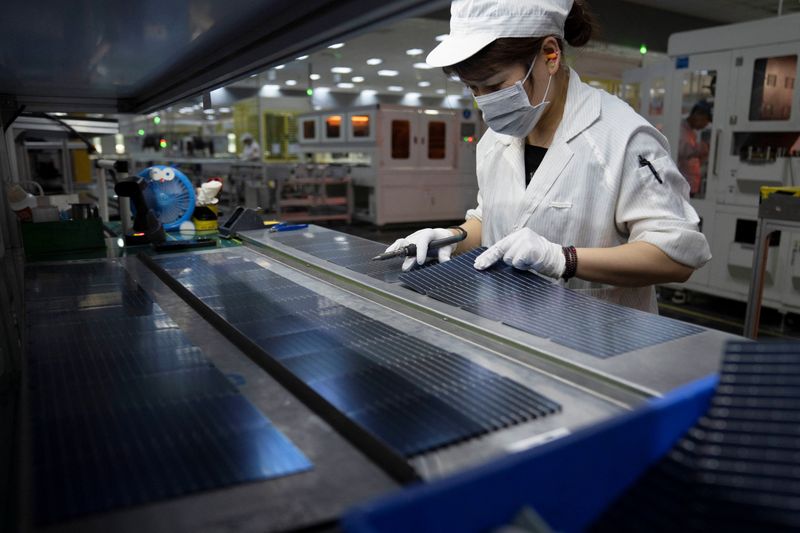BEIJING (Reuters) – China’s industrial output grew at a slower pace in October, while retail sales surprised on the upside, a mixed set of data that underlined the economy’s struggles to pick up speed despite a recent blitz of policy support measures.
The burst of data is likely to maintain pressure on Chinese officials as they brace for the return to the White House of Donald Trump, who has vowed to hike tariffs on Chinese goods and named China hawks to his cabinet in a troubling sign for the world’s second-biggest economy.
Data released on Friday by the National Bureau of Statistics showed industrial output grew 5.3% from a year earlier, slowing from September’s pace of 5.4% and missing expectations for a 5.6% rise in a Reuters poll of 43 analysts.
Retail sales, a gauge of consumption, grew 4.8% in October, up from a 3.2% increase in September and compared with forecasts for an expansion of 3.8%.
Retail growth was boosted by a week-long holiday, and the annual Singles’ Day shopping festival, which kicked off on Oct. 14, ten days earlier than last year.
Data provider Syntun estimated that sales across major e-commerce platforms rose 26.6% to 1.44 trillion yuan over the Singles Day event.
Fixed asset investment rose 3.4% in the first ten months of 2024 from the same period a year earlier, compared with an expected 3.5% rise. It grew 3.4% in the January to September period.
In September, China’s central bank unveiled its biggest stimulus since the pandemic.
In its latest measures, the country’s top legislative body approved a 10 trillion yuan ($1.4 trillion) package last week to ease local government “hidden debt” burdens, rather than directly injecting money into the economy as some investors had hoped.
On Wednesday, authorities also announced tax incentives on home and land transactions to support the crisis-hit property market.
Analysts say the barrage of measures will only have a modest positive effect on economic activity, demand and prices in the near term.
China’s consumer prices rose at the slowest pace in four months in October, separate data released on Saturday showed, while producer price deflation deepened, despite the extra policy support.

Beijing has set a roughly 5% gross domestic product growth target for the year, though a Reuters poll last month forecast the pace to slightly undershoot the goal and slow further to 4.5% in 2025.
Trump’s election win last week has also caused unease in China as the President-elect has threatened to impose tariffs of 60% or more on Chinese goods imports, which could potentially usher in a prolonged period of economic uncertainty and further delay a long-awaited revival.


